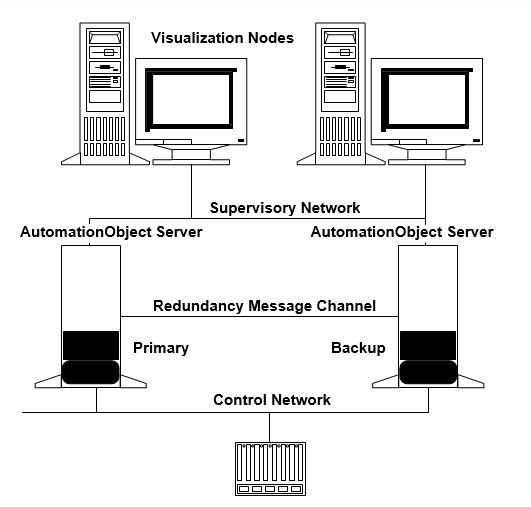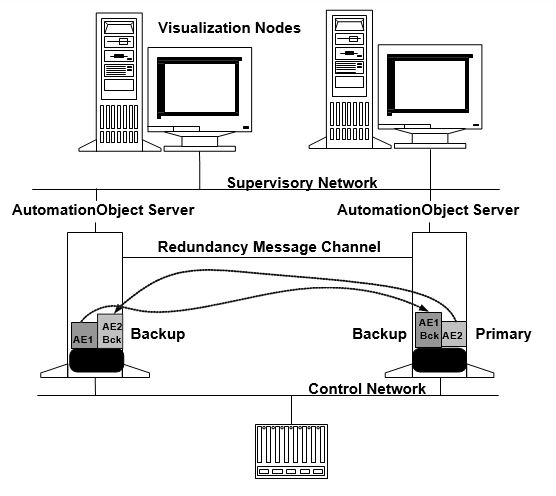Topic 10.1.1: Application Redundancy
Redundant
Application Engines
- The purpose of Application Engine Redundancy is to
ensure continuous operation by providing an engine that remains active in the
event of a single system component failure. It operates on the principal that
with redundant engines, one engine is in an Active Role while the other is in a
Standby Role waiting to take control.
- The hardware topology required for Redundant Application
Engines functionality is simple: two computers with two network interface cards
(NIC) each. (Additional network cards could be used for other purposes.)
- To configure redundancy, open the Application Engine
Object Editor and check “Enable Redundancy” on the Redundant tab.
Redundant Application Engines
- The Application Engine that is enabled is considered the Primary engine of the redundant pair; when you enable this engine, an additional (Backup) engine is automatically created.
- Since an engine is required to run under a platform, the platform objects that sponsor the Primary and Backup application engines need to be configured to use the dedicated NIC. This NIC provides a high speed inter-connection link or Redundant Message Channel between the platforms. The Message Channel is vital to keep both engines synchronized with alarms, history, and checkpoint items from the engine that is in the Active Role. Each engine also uses this Message Channel to provide its health, along with status information, to the other.
- The sequence of deployment (cascade, Primary first, or Backup First) of the redundant pair of Application engines determines which of these in the pair will take the Active Role. The first engine deployed takes the Active role while the other one takes the Standby role. The engines maintain their current roles until a failure occurs. (A failure might consist of computer hardware lost or failed, or a network card failure.) If a failure occurs, the engine with the Standby role assumes the Active role and the engine that was in the Active role is given the role of Standby - Not Ready. When the cause of the failure has been remedied, this engine assumes the Standby - Ready role.
- Terminology
- Two sets of terms are critical to
understanding the functions of redundant objects. These are described below.
- During
Configuration
- Primary object:
The object intended
as the main or central
provider of the functionality in the
run-time. For AppEngines, it is the object
you enable for redundancy. For data acquisition, it is the DIObject
you intend to use first as your data source in the run-time.
- Backup object: The object that provides the functionality of the Primary object
when it fails. For AppEngines, it is the object created by the ArchestrA
infrastructure when the Primary object has been enabled for redundancy. For
data acquisition, it is the DIObject you do not intend to use first as your
data source in the run-time.
- During Run-Time
- Active object: The object that is currently executing desired functions. For
AppEngines, it is the object that is hosting
and executing ApplicationObjects. For data acquisition, it is the object
that is providing field device data through the RedundantDIObject.
- Standby object: The passive object; that is, it is waiting for a failure in the Active
object's condition or for a force-failover. For AppEngines, it is the object
that monitors the status of the Active AppEngine. For data acquisition, it is
the object that is not providing field device data through the
RedundantDIObject.
- Note: In the case of AppEngine redundancy, ArchestrA supports a one-to-one
topology in which the computers hosting the Primary and Backup object sets must
be connected by crossover cable and have fixed IP addresses.
Key Points
Before placing an engine with
redundancy enabled under a platform in the Deployment view, configure the platform
Redundant Message Channel;
otherwise the engine
will show an error.
In
the Application Views panes of the ArchestrA IDE, only in the Deployment view will the Backup engine be visible.
The Backup Engine cannot be edited.
After editing an engine
with redundancy enabled
while it is deployed, when it is redeployed the engine which has the Active role will perform
this function. It will then update the engine that is
in the Standby role.
A
Backup engine's deployment status can be different from that of the Primary
Engine, but operations such
as renaming, importing and exporting, GRdump and GR load that are performed on
the Primary Engine are automatically performed on the Backup. These operations
cannot be performed on the Backup Engine alone.
Platforms hosting primary and
backup AppEngines should have identical configuration. For instance, it is
possible to configure the platform with the Primary to be the InTouch Alarm provider and filter the areas
you want to query in the Platform editor. For the Alarm Management system
to behave correctly, this same configuration should be implemented in the platform with the Backup. It is recommended that you
make the following parameters common to both
platforms:
- IT Alarm
provider-Areas
- Store Forward directories
- Common
user-defined attributes (UDAs)
- Common scripting
Dedicated and
Shared Loads
There are two types of redundant engine configuration: Dedicated and
Shared load.
In a Dedicated redundant
configuration, if the Active Engine fails or is shut down, or if a
communication failure occurs, the engine in the Standby Ready role assumes the
Active role. In this scenario, the platform with the engine in the Standby
Ready role is essentially idling. See the following illustration.

In a Shared redundant
configuration, two or more Redundant Engines reside on each of two platforms.
Each platform hosts a Primary and a Backup engine. See the illustration below.
This scenario operates similarly to the Dedicated configuration, but allows the
application load to be shared on two computers until a failure occurs. When a
failure occurs, one platform hosts the load of both application engines. The
benefits of using this approach is that the time of failover is shortened and
that only part of an application process is affected during a failure.

What Happens in Run-time
- AutomationObjects are always assigned to the Primary
AppEngine in the configuration environment. But in the run-time,
AutomationObjects are always deployed to the Active AppEngine whether or not it
was initially configured as the Primary object. All files are then deployed by
the Active AppEngine’s WinPlatform to the Backup AppEngine as described above.
- In the run-time environment, the Active and Standby
AppEngines first attempt to establish communications across the RMC. This
occurs when an AppEngine belonging to a redundant pair first starts up.
Therefore, if one AppEngine is relocated later to a different WinPlatform, this
communication between AppEngines can be reestablished.
- During run-time, the Active and Standby engines
communicate with each other and monitor each other's status.
- In the case of a hardware or software failure on one
computer, the Standby AppEngine will become the Active one. Then, if you want
to move the new Standby AppEngine from its hosting computer, undeploy this
AppEngine by using the On failure mark
as undeployed option on the Undeploy
dialog box, and then reassign and redeploy it to a WinPlatform that is
configured for redundancy on another computer.
Key Points
Before placing an engine with redundancy enabled under a platform in the Deployment view, configure the platform Redundant Message Channel; otherwise the engine will show an error.
In the Application Views panes of the ArchestrA IDE, only in the Deployment view will the Backup engine be visible.
The Backup Engine cannot be edited.
After editing an engine with redundancy enabled while it is deployed, when it is redeployed the engine which has the Active role will perform this function. It will then update the engine that is in the Standby role.
A Backup engine's deployment status can be different from that of the Primary Engine, but operations such as renaming, importing and exporting, GRdump and GR load that are performed on the Primary Engine are automatically performed on the Backup. These operations cannot be performed on the Backup Engine alone.
Platforms hosting primary and backup AppEngines should have identical configuration. For instance, it is possible to configure the platform with the Primary to be the InTouch Alarm provider and filter the areas you want to query in the Platform editor. For the Alarm Management system to behave correctly, this same configuration should be implemented in the platform with the Backup. It is recommended that you make the following parameters common to both platforms:
- IT Alarm provider-Areas
- Store Forward directories
- Common user-defined attributes (UDAs)
- Common scripting
Dedicated and Shared Loads
There are two types of redundant engine configuration: Dedicated and Shared load.
In a Dedicated redundant configuration, if the Active Engine fails or is shut down, or if a communication failure occurs, the engine in the Standby Ready role assumes the Active role. In this scenario, the platform with the engine in the Standby Ready role is essentially idling. See the following illustration.
In a Shared redundant configuration, two or more Redundant Engines reside on each of two platforms. Each platform hosts a Primary and a Backup engine. See the illustration below. This scenario operates similarly to the Dedicated configuration, but allows the application load to be shared on two computers until a failure occurs. When a failure occurs, one platform hosts the load of both application engines. The benefits of using this approach is that the time of failover is shortened and that only part of an application process is affected during a failure.
